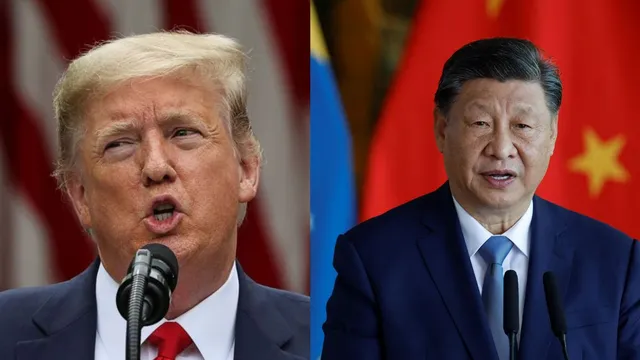- By Shivangi Sharma
- Thu, 10 Apr 2025 06:40 PM (IST)
- Source:JND
In a dramatic pivot that’s reshaping the global trade landscape, US President Donald Trump has announced a 90-day pause on the new reciprocal tariff system for nearly all trading partners, except China. The move comes just hours after sweeping new levies were imposed on imports from 60 countries, signaling both strategic restraint and aggressive escalation in America’s ongoing trade war with Beijing.
President Trump stunned markets this week when he announced that a "lowered reciprocal tariff of 10 per cent" would be temporarily applied to most countries for a 90-day negotiation period. The move was widely seen as an attempt to cool international tensions and avoid a broader economic backlash.
However, China was deliberately excluded from the pause. In fact, Trump raised tariffs on Chinese imports to a staggering 125 per cent, citing Beijing’s continued "lack of respect" and retaliation through their own trade restrictions. This punitive hike followed China’s declaration of new 84 per cent tariffs on US goods.
Trump justified the exclusion by stating, “China continues to take advantage of our openness. At some point, hopefully in the near future, China will realise that the days of ripping off the USA and other countries are no longer sustainable.”
Why China Was Singled Out
The decision to exclude China stems from more than just economic policy, it reflects deeper strategic concerns. China has long been accused of intellectual property theft, forced tech transfers, and flooding global markets with cheap goods. Moreover, as the primary source of fentanyl and its ingredients reaching US shores, Beijing’s perceived negligence has further fueled Washington's frustration.
Trump and his allies argue that China represents the worst-case scenario of exploitative trade practices. His supporters view tariffs as a tool to rebalance trade, promote domestic manufacturing, and reduce America’s trade deficit with China, which stands at over USD 300 billion annually.
Although mainstream economists warn that trade imbalances are not inherently problematic, Trump has persistently linked them to lost jobs and manufacturing decline in the US. His team calculated the original 34 per cent tariff on China by dividing the annual deficit by total Chinese exports to the US, a method widely criticised for its inaccuracy. Nevertheless, Trump kept increasing the tariff rate each time China retaliated, ultimately reaching 125 per cent.
Stock Markets React: US Soars, China Shrugs
Despite the aggressive tariff hike on China, global markets responded positively to the 90-day pause. The US stock market surged, with major indices rising sharply as investors welcomed the temporary truce for non-China trade partners.
Interestingly, China’s market also showed resilience. Analysts suggest that Beijing’s relatively calm response indicates confidence in domestic buffers and anticipation of further policy support from the Chinese government.
ALSO READ: White House Sends Stern Message After Trump’s Tariff Shift: ‘Don’t Retaliate, You’ll Be Rewarded’
China’s Economic Outlook Takes A Hit
However, not all is well in the world’s second-largest economy. As the tariffs bite, economists are trimming China’s growth forecasts. Goldman Sachs has slashed its GDP growth projection for China to 4.0 per cent, down from 4.5 per cent, citing the recent tariff escalation. The firm estimates the new US tariff rate, up from 11 per cent to 125 per cent, could shave 2.2 percentage points off China's 2025 GDP.
Meanwhile, Citi analysts cut their forecast to 4.2 per cent, noting that the recent diplomatic breakdown leaves “little scope for a trade deal” between Washington and Beijing this year.
Both firms suggest that while Beijing is likely to ramp up stimulus and monetary easing, such measures won’t fully offset the damage from a full-blown tariff war.
ALSO READ: Trump Backs Off Tariffs But His Trade War With China Shows No Signs Of Cooling
Trump’s Endgame: Pressure Without Collapse
Trump’s 90-day pause appears to serve dual purposes. On one hand, it’s a gesture to America’s allies and global investors that the US is open to negotiation. On the other hand, it reinforces Trump’s stance that China must be dealt with separately due to its history of trade manipulation.
By raising tariffs on Beijing while offering others a temporary reprieve, Trump positions the US as flexible but firm, willing to adjust course for most, but drawing a hard line on China.

